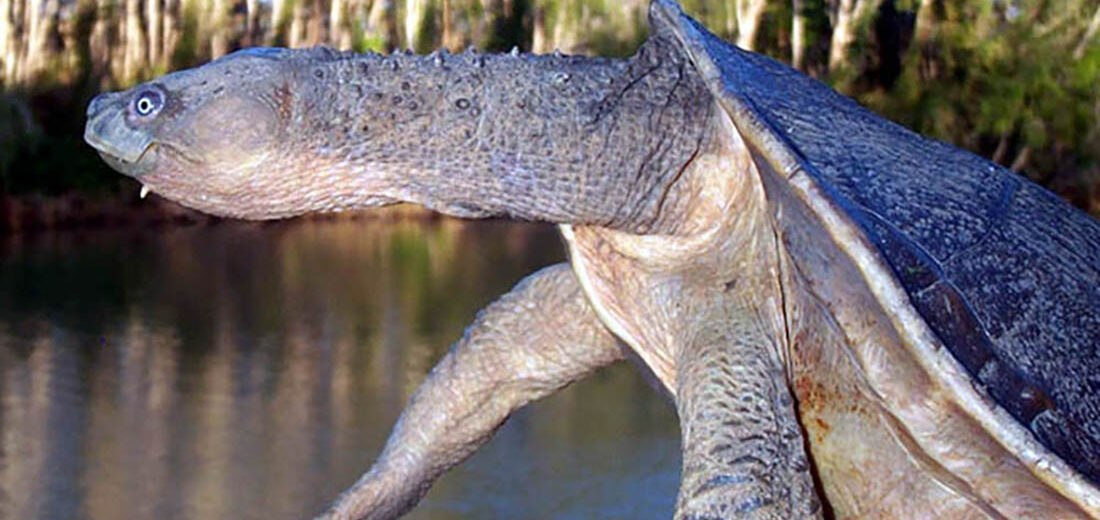
The Fitzroy River turtle is a species of freshwater turtle that lives in south eastern Queensland, Australia and is only found in tributaries of the Fitzroy River. Unfortunately, due mainly to predation and also human interference, these turtles are listed as Vulnerable by the IUCN. Conservation efforts are helping, but very slowly.
First the Stats…
Scientific name: Rheodytes leukops
Weight: Up to 9 ounces
Length: Up to 10+ inches
Lifespan: Unknown
Now on to the Facts!
1.) When they hatch they are not even as long as the average pinky finger.
2.) The primary predators of these turtles are cats, foxes, pigs, goannas and crocodiles.
3.) These turtles are found in rivers with large deep pools and rocky, sandy beds, connected by shallow riffles. They prefer high water clarity, and are often associated with Ribbon weed beds.
4.) This turtle is known to feed on the larvae of aquatic insects, sponges and ribbon weed.
5.) Boat owners have been encouraged to look out for the turtles floating at the surface and go slow for the turtles below the water surface to give them time to get out of the way.
But wait, there’s more on the Fitzroy River turtle!
6.) There are currently several studies describing the habitat and biological characteristics of the Fitzroy River turtle, as well as efforts to save the species.
7.) They can take between 15 – 60 breaths per minute through gills located in their cloaca (their butt)! This process is known as cloacal respiration.
Did you know…?
They can stay underwater for an amazing 21 days at a time!
8.) Nesting occurs between September and October.
Now a Short Fitzroy River turtle Video!
Also, check out the Critter Science YouTube channel. Videos added frequently!
Want to suggest a critter for me to write about? Let me know here.



